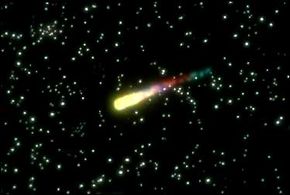In terms of casualties, a red Malibu is nothing compared to an entire population, but many scientists believe that a meteorite was responsible for the extinction of the dinosaurs. The theory holds that approximately 65 million years ago, a six-mile-wide asteroid crashed into Earth, causing a crater about 110 miles across and blowing tons of debris and dust into the atmosphere. Scientists believe the impact caused several giant tsunamis, global fires, acid rain, and dust that blocked sunlight for several weeks or months, disrupting the food chain and eventually wiping out the dinosaurs.
The theory is controversial, but believers point to the Chicxulub Crater in Yucatan, Mexico, as the striking point of the asteroid. Skeptics say the crater predates the extinction of dinosaurs by 300,000 or so years. Others believe dinosaurs may have been wiped out by several distinct asteroid strikes, rather than just the widely credited Chicxulub impact. Scientists will likely be debating this one for centuries, or at least until another gigantic asteroid strikes Earth and wipes us all out.
